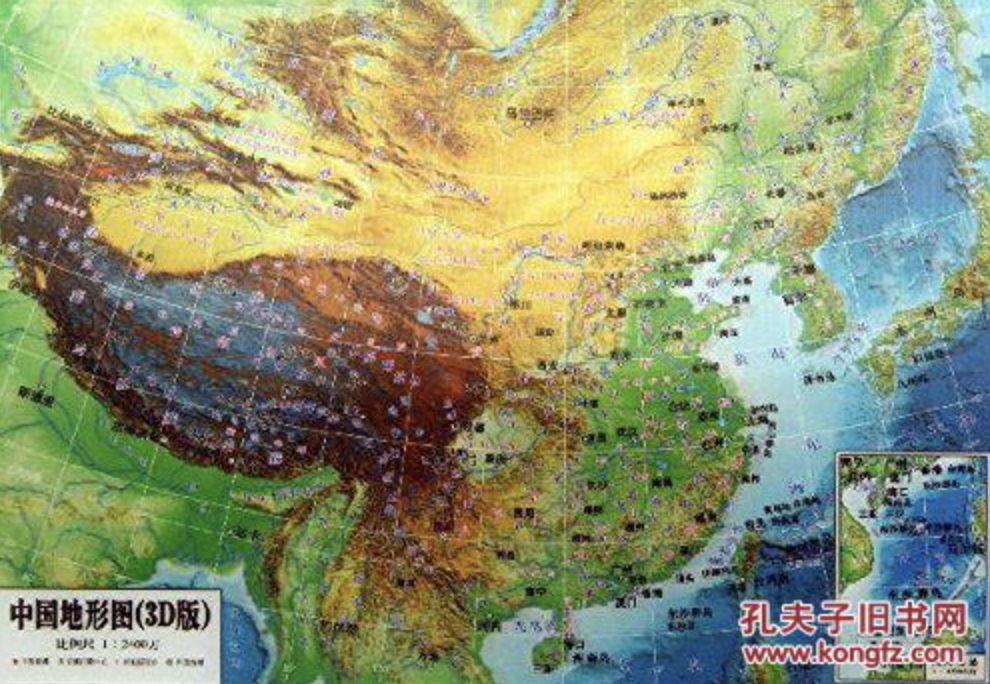Window-to-China
Overview of last view Blogs
China expands along the silk road via hybrid wheat

Chinese hybrid wheat grows along the silk road
China Seed Group Co. and others are promoting the spread of hybrid wheat into countries such as Pakistan, Bangladesh and Uzbekistan and have gained support from local farmers, an excellent example of China’s expansion through modern agricultural high-tech achievements. Wheat is one of the most important grains of the Belt and Road countries, with an area of wheat cultivated along the railway lines alone of more than 73 million ha, about 3.2 times the size of China. However, the local productivity of wheat in these countries has not reached the world average level. In 2011, the China Seed Group Co. and others successfully industrialized hybrid wheat. Since 2012, they started to cooperate with Pakistani enterprises and agricultural universities and tested cultivation of two hybrid wheat varieties in Pakistan. The Chinese dispatched nearly 150 specialists to more than 20 cities in Pakistan, and established links to farmers. They succeeded to reduce the seed production cost of hybrid wheat, for example by improving mechanized seed processing technology, and made progress in regulating the seed harvesting period of hybrid wheat by regulating the fruiting flowering period fruit. By testing more than 120 kinds of varieties in over 230 cultivation areas, China’s two hybrid wheat got big results and the production increased by 24.4% on average compared to local varieties in Pakistan, even by 50.1% in a wheat production area in the north of Pakistan. China Group Seed Group Co. has also promoted the spread and market development of hybrid rice technology in Bangladesh since 2015. Both China and Bangladesh governments officially joined the strategic partnership in October 2016. According to a company’s spokesman, the group now develops new varieties of high-yield, high-quality, high-tolerance wheat suitable for application in Central Asia and South Asia along the Silk Road, and in the future also in South Asia, Southeast Asia, Africa and Europe to build a hybrid and wheat model application network for Asia · Africa · Europe and at the same time construct a hybrid wheat new breed development base.
Japan JST China news, August 29, 2018
Gene therapy companies in China
According to a survey of China S&T Network Publisher, the following Chinese startups deserve observation:
- EdiGene 博雅辑因, http://edigene.com
Founded in 2015, EdiGene is based in Beijing and has branches in Guangzhou and Cambridge, USA. The company has accumulated more than a dozen patented technologies around gene editing, T cell and stem cell processes, and high-throughput genetic screening. Its technology platform includes gene editing and treatment of T-cells and hematopoetic stem cells.
- OrienGene Biotechnology奥源和力生物, http://www.oriengene.com
Founded in 2005, Beijings OrienGene Biotechnology Co. is committed to the development of innovative drugs for gene therapy using herpes simplex virus as a carrier. OrienX010, a new gene therapy drug developed with independent IP, is a recombinant attenuated type I Herpes Simplex Virus (HSV-1) oncolytic vector for malignant solid tumors, and Phase I clinical trials for the treatment of malignant tumors were completed. The company offers technical services for pharmaceutical companies and research institutes while developing effective gene therapy drugs for tumors, genetic diseases, immune systems and nervous system diseases.
- Xiyuan Biotechnology希元生物, https://www.itjuzi.com/company/44636
Xiyuan Bio was founded in 2005 by CAS Academician LIU Xinyu. He is also director of Zhejiang University of Technology‘s Gene Therapy Research Center. The company’s “Cancer Targeting Gene-Viro-Therapy (CTGVT)” strategy has added anti-cancer genes to oncolytic viruses, and its anticancer effect has increased by 10 to 100 times. Later, the “double gene CTGVT-DG” strategy completely eliminated transplanted tumors. The company has successfully carried out preclinical research on the anticancer drug “recombinant human tumor targeting gene-virus (ZD55-IL-24) injection”.
- Sibiono赛百诺, http://www.sibiono.com/en/index.aspx
SiBiono’s self-developed product recombinant Adp53 adenovirus injection (now Gengdic) was awarded a new drug certificate by CFDA as early as 2003. The company uses adenovirus vectors and studies intravenous recombinant human P53 Adenovirus injection (ivAd-p53) and “Double Gene Recombinant Oncolytic Adenovirus Injection” (SBN-3).
- Chengdu Jinweike Biological 成都金唯科生物
Established in 2017 by the State Key Laboratory of Biotherapy of Sichuan University and Xinshang Group. The current director is CAS academician and former vice president of Sichuan University, Professor WEI Yuquan. No details on technology were provided.
China S&T Network Publisher, August 22, 2018
Murder suspect arrested by real-time face image analysis matched with big data
The white-haired man who entered the ticket office trying to get on the bus at Guiyang Ginyang bus station in Guizhou province was arrested before he could purchase the ticket: the station’s surveillance camera had shot his image, the “facial image big data” system of Guiyang Municipal Public Security Bureau had immediately issued a warning that “a suspect in flight enters the station premises”, and the station patrol was ordered to arrest him. One minute later, the man was seized and his identity was confirmed on the spot: the arrested man was suspected of a murder case which had occurred in Zhejiang Province 18 years ago.
Japan JST China news release, August 16, 2018
Harbin company publishes first 3D map of China

3D Map of China
The “3D view of China” was published by Harbin Map Publishing Co. Using computer processing and raster 3D display technology, the 3D topography and landscape of China is displayed as seen from the sky. Compared to traditional maps, digital maps have a larger amount of information and there is no limitation on width. Updating is also smooth.
Japan JST China news release, August 16, 2018
Beijing enters 5G era with first base station in operation

5G China Unicom
At the Beijing Unicom Hall 1st Floor Hall, a huge screen displays the street scenery of the Haidian District Musaka Lake and Xicheng District Finance Street. Beijing City has officially entered the 5G era. 5G is capable of directly transmitting 4K high quality image signals, the clarity of the image quality is 16 times that of 4G, the image quality is clearer and more beautiful. 5G smartphones will be announced one after another in the first half of next year, and Beijing Unicom will start recruiting 5G test users.
Japan JST China news, August 14, 2018
Tsinghua University group develops tattoo-type electronic skin

Electronic skin graphene-based Tsinghua University
The group of Tianling REN at the school of information science and technology of Tsinghua University has developed a graphen-based electronic tattoo which can be used for detecting multiple functions such as breathing, heart rate, sleep analysis and vocalization. The team applied graphene oxide by wet stripping and reduced it to graphene by laser irradiation, resulting in an ultra-thin layer which could be personalized as a tattoo during the irradiation process. The graphene layers respond to the stretching and compression of the skin surface resulting in changes of electric resistance for readout devices. In addition to skin, graphene tattoo were transferred to other substrates such as leaves, and silk.
Tsinghua University news release, July 31, 2018
Robot Little Joe” sells non-prescription drugs in a Shandong pharmacy”
A pharmacy in Shandong province is presently testing the robotic pharmacist “Little Joe”, whose educational level is said to be equivalent to a pharmacist with 10 years of experience. Little Joe” can diagnose a patient through consultation and give advice on medication. The robot will make recommendations based on such interview and the properties of the drug, and the patient can directly buy drugs by mobile payment such as WeChat. Robotic pharmacists are expected to play a role in lowering pharmacy costs and improving pharmacy service professionalism. In China, a pharmacy’s average net profit is only 5 to 7%, of which the manpower cost has the highest share, twice the rent. According to statistics, there are 480,000 pharmacies throughout the country, and half of them are unable to provide professional pharmacists services because they do not have enough talent pools to provide accurate advice for patients. The drugs provided by the pharmacist robot are non-prescription medicines only. For prescription medicines, according to regulations, hospital doctors are required to confirm the sale.”
China Bio news release, March 26, 2018
The CASEarth Big Science Project
The project, inaugurated at March 1, 2018, aims to build a global and open international big earth data science center over the next 5 years. A team of 129 institutions from home and abroad with a total of more than 1200 researchers will focus on three areas of work. The first is to solve a series of technical bottlenecks and form a multi-disciplinary, unique big data and cloud service platform, that supports national macro decision-making and major scientific discovery. The second is to build a digital data-driven and highly influential digital earth science platform to display and dynamically promote the “One Belt and One Road” sustainable development process. The third is to explore a new paradigm for the development of science that is driven by the development of big data and multidisciplinary integration, and strives to achieve major breakthroughs in the areas of resource and environment, oceans, the poles, biodiversity, and ecological security. . There are also nine projects related to security. Project leader is GUO Huadong, academician of CAS. According to GUO, U.S. big data in 2013 accounted for about 31%, EU for 19%, and China for 13% of global data. In 1917, China’s share had increased to 16%, and in 2020 China will account for 21%.
https://baike.baidu.com/item/地球大数据科学工程/22387705?fr=aladdin
CAS news release, March 21, 2018
Zhejiang University: Bionic fabric inspired by polar bear’s fur provides body heat camouflage
Polar bears fur shows almost no leakage of heat, due to a pore-like structure in hairs which lead to formation of an air package under the fur. Bo HAO and colleagues at Zhejiang University have injected a 5 % fibroin solution into an iced spinning machine, forming fibers. In order to remove the ice, the fibers were then freeze-dried, resulting in fibers with an orderly distribution of narrow holes. When these fibers were worn into a miniature sweater, the surface temperature of a rabbit dressed in such sweater became locked at outside temperatures between -10 ℃ to 40 ℃, providing a perfect heat camouflage. Thermal conductivity of polar bear’s hair was found to be 27 W/K, whereas it was 19 W/K for the best among the bionic fibers produced. The group claims to be able to produce 1 meter of such fabric in two hours.
CAS news release, March 6, 2018
Giant panda: a vegetarian with a digestive tract of a carnivore
A new study by ZHANG Wenping, a Panda specialist at Sichuan University in Chengdu, has shown, by metagenome sequencing of the Panda’s gut microbiota, that it is not the Panda microbiota which would make a major contribution to his nutrition by degrading of cellulose or lignin abundant in bamboo, a Panda’s major staple food. Rather, the Panda’s own digestive enzymes have evolved for a high digestibility of starch and hemicellulose, allowing for a fast dietary transition from breast milk to bamboo shoots and tender leaves as a major source of nutrition. Bamboo has among the highest levels of starch among all woody plants, and giant pandas have adapted to bamboo as their preferred nutrition because it is everywhere in their habitats, and they have few competitors for this type of food.
CAS news release, February 27, 2018
Thrombin loaded DNA origami fight cancer – animal experiments
The groups of Baoquan DING and colleagues at the National Center for Nanoscience and Technology (NCNST) in Beijing and of Hao YAN at Arizona State University have constructed DNA origami decorated with a DNA aptamer which specifically binds to nucleolin, a protein expressed on tumor-associated endothelial cells. The DNA origami contains thrombin which coagulates blood, thus inhibiting blood supply. When such vectors were i.v. injected to tumor-bearing mice, they were shown aggregate within 1 hour at the tumor, generated tumor tissue damage within 24 hours. Most of the nanorobots were cleared and degraded from the mouse body after 24 hours. By two days, there was evidence of advanced thrombosis, and after 3 days, thrombi in all tumor vessels were observed. in a melanoma mouse model, 3 out of 8 mice receiving the nanorobot therapy showed complete regression of the tumors. The median survival time more than doubled, extending from 20.5 to 45 days. The nanorobot proved to be safe and immunologically inert for use in normal mice and in mini pigs, showing no detectable changes in normal blood coagulation or cell morphology. There was no evidence of the nanorobots spreading into the brain (exclusion of stroke risks).
CAS news release, February 13, 2018
China-US team explores „nanorobots“ to seek and destroy tumors
The groups of Baoquan DING and colleagues at the National Center for Nanoscience and Technology (NCNST) in Beijing and of Hao YAN at Arizona State University have constructed DNA origami decorated with a DNA aptamer which specifically binds to nucleolin, a protein expressed on tumor-associated endothelial cells. The DNA origami contains thrombin which coagulates blood, thus inhibiting blood supply. When such vectors were i.v. injected to tumor-bearing mice, they were shown aggregate within 1 hour at the tumor, generated tumor tissue damage within 24 hours. Most of the nanorobots were cleared and degraded from the mouse body after 24 hours. By two days, there was evidence of advanced thrombosis, and after 3 days, thrombi in all tumor vessels were observed. in a melanoma mouse model, 3 out of 8 mice receiving the nanorobot therapy showed complete regression of the tumors. The median survival time more than doubled, extending from 20.5 to 45 days. The nanorobot proved to be safe and immunologically inert for use in normal mice and in mini pigs, showing no detectable changes in normal blood coagulation or cell morphology. There was no evidence of the nanorobots spreading into the brain (exclusion of stroke risks).
CAS news release, February 13, 2018
This work, part of which was recently published in Nature Biotechnology https://www.nature.com/articles/nbt.4071, is just another example for the close cooperation of Chinese scientists in China and the USA. In fact, among the 50 million Chinese living outside China https://en.wikipedia.org/wiki/Overseas_Chinese , about 10 % live in the USA, and have often achieved leading positions in academia and business.
China celebrates its top ten achievements 2017 in medical biotechnology
According to an evaluation committee of the China Association of Pharmaceutical Biotechnology led by 11 Academicians, the following ten achievements are considered top among 2017 developments:
1. Approval of recombinant Ebola virus vaccine, produced in serum-free high-density culture,
2. Low-cost 3D generation gene sequencer based on single-molecule fluorescence developed and marketed
3. Automated white-eye image processing equipment coupled to AI for simple eyesight acquisition and non-invasive screening for diseases,
4. Guidelines for cell therapy products released, applications for clinical tests on CAR-T products
5. Genetic basis for the early onset of myopia in children discovered and gene-diagnostic system established
6. Domestic PD-2/anti-CTLA-4 bispecific monoclonal antibody for treatment of Hodgkin’s lymphoma successfully completed phase-III clinical trials and is listed for registration,
7. Early diagnosis and immunotherapy of hepatocellular carcinoma based on epigenetics and unicellular histology, by detecting the methylation level of specific sites of circulating tumor DNA in peripheral blood,
8. Gene therapy of liver diseases by plasmid-borne hepatocyte growth factor enters phase Ⅲ clinical trial
9. Nine-valent cervical cancer vaccine produced in E. coli is approved for clinical trials
10. The first domestic orthopedic robot was approved by CFDA and completed more than 1,300 sets of surgery. The positioning accuracy of this system is excellent. It can be used in general orthopedic surgery of spine, pelvis, acetabulum, and limbs.
China Bio news release, January 13, 2018
China: Top Ten most influental life scientists in 2017
China Bio news release, January 3, 2018
Hainan Airlines: first transpacific passenger flight using biofuel
Hainan Airlines flight HU497 departed from Beijing Capital Airport on Nov. 21 and landed 11 hrs later at Chicago O’Hare airport in the USA. It carried 186 passengers and 15 crew members. The biofuel used (Sinopec No. 1 jet fuel) was processed from coconut, palm, Jatropha, linseed and other vegetable oils, as well as from microalgae oil, cooking oil and animal fat and approved by CAAC. China at present consumes about 30 million tons of aviation fuel and strives to drop the average annual energy consumption per unit passenger by more than 15% by 2020.
China meldet ersten transpazifischen Passagierflug mit Biokraftstoff
Der Hainan Airlines Flug HU497 startete am 21. November vom Beijing Capital Airport und landete 11 Stunden später auf dem Chicago O’Hare Airport in den USA. Es beförderte 186 Passagiere und 15 Besatzungsmitglieder. Der verwendete Biokraftstoff (Sinopec No. 1 Jet Fuel) wurde aus Kokosnuss-, Palm-, Jatropha-, Leinsamen- und anderen pflanzlichen Ölen sowie aus Mikroalgenöl, Speiseöl und tierischen Fetten hergestellt und von der CAAC zugelassen. China verbraucht derzeit rund 30 Millionen Tonnen Flugbenzin und strebt an, den durchschnittlichen jährlichen Energieverbrauch pro Passagier um mehr als 15 % bis 2020 zu senken.
China Industrial Biotechnology Network, November 22, 2017
